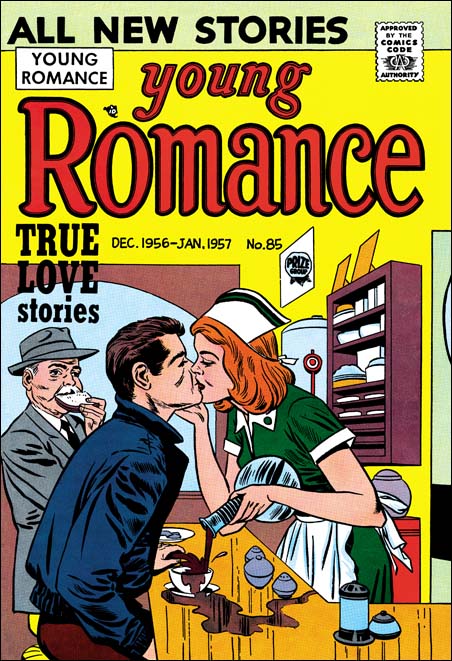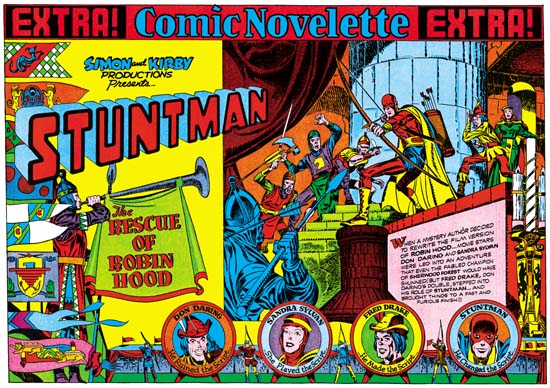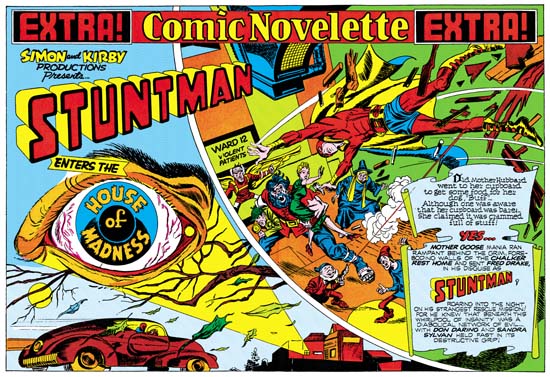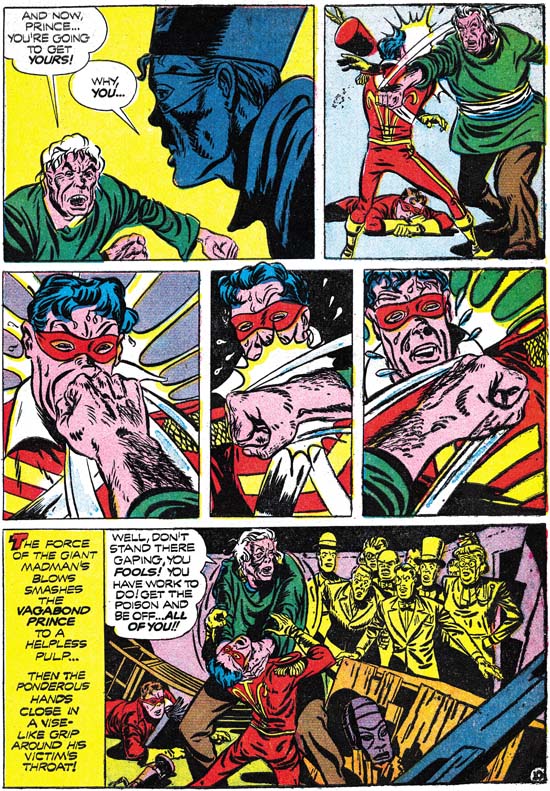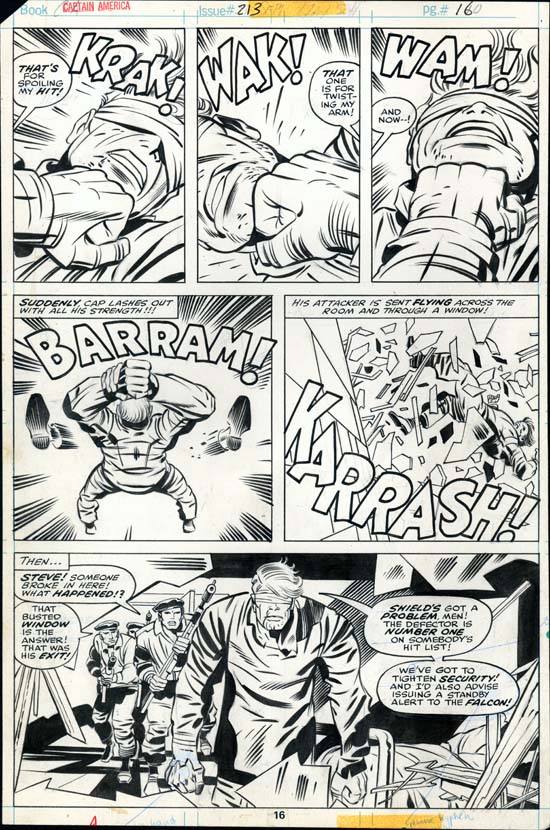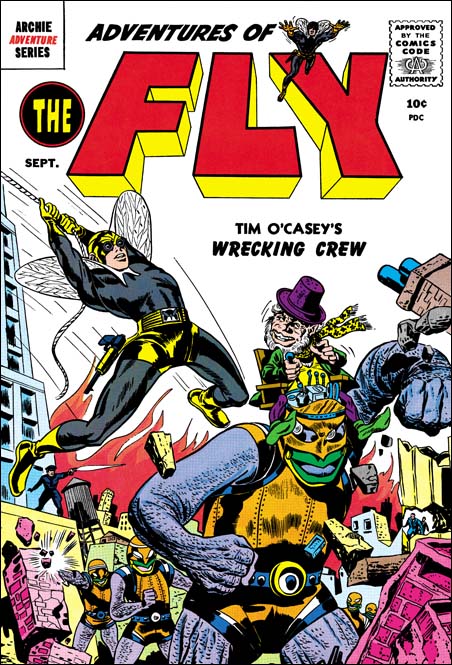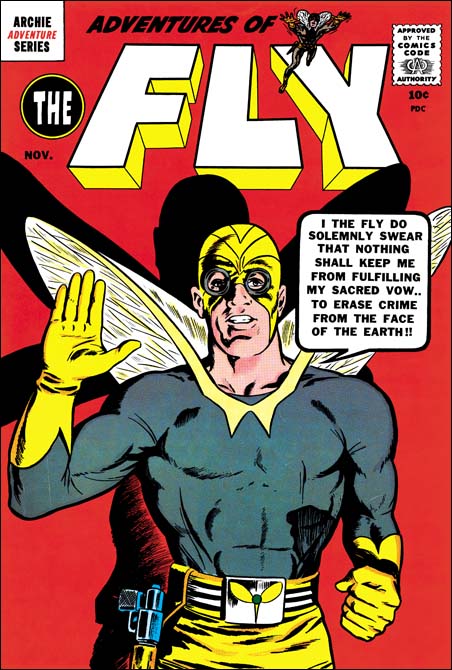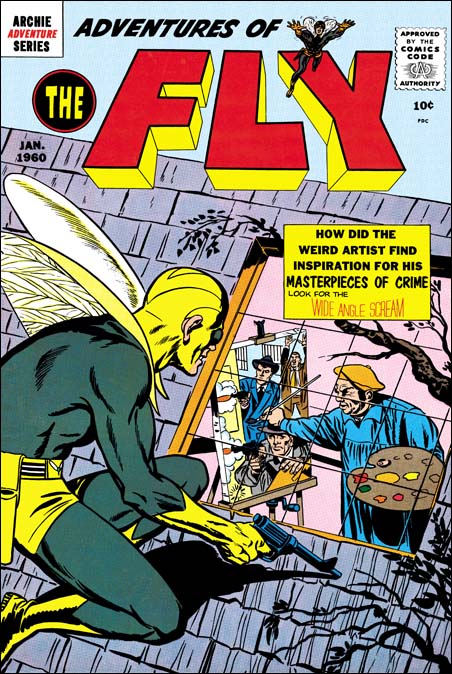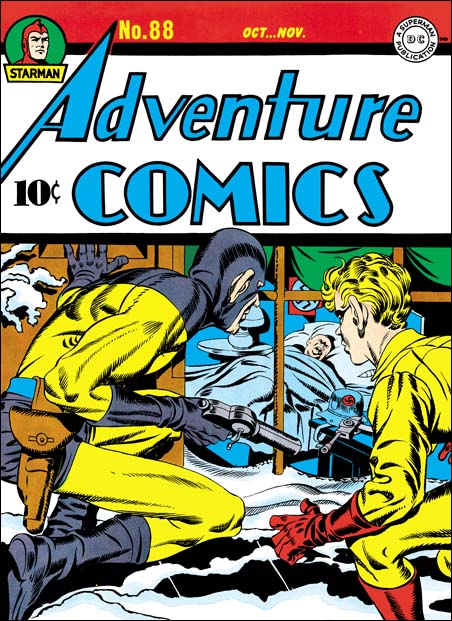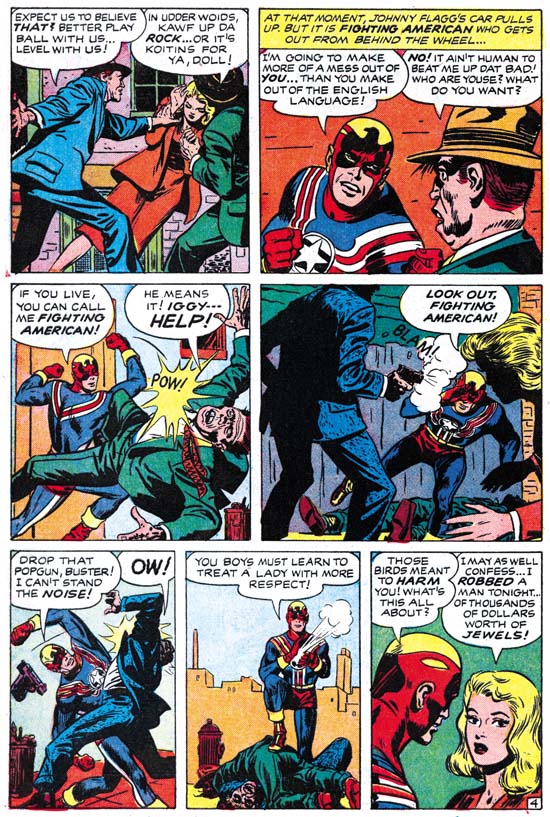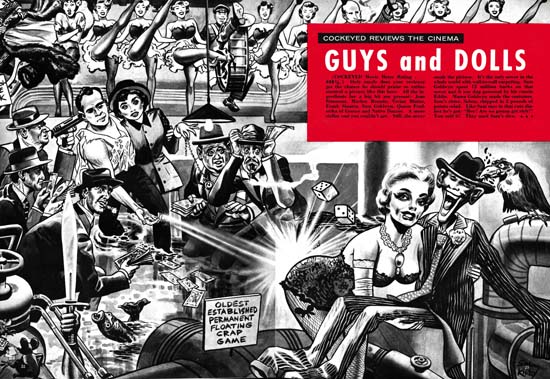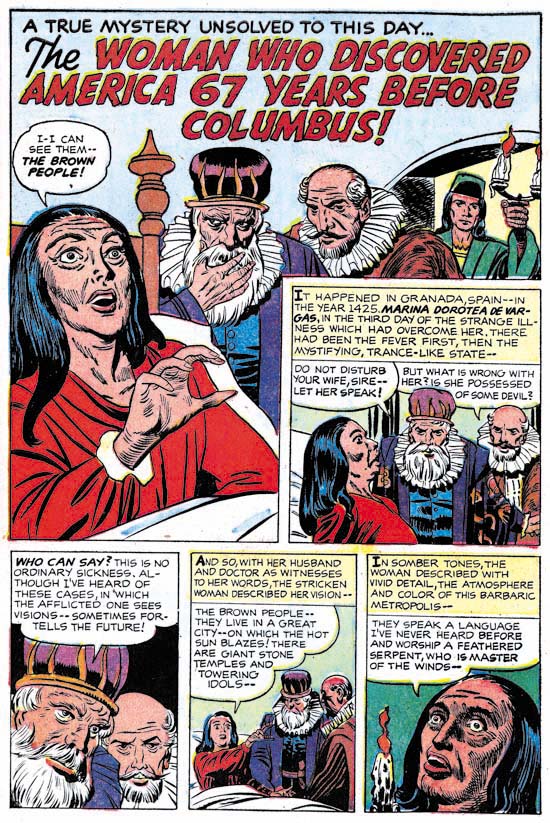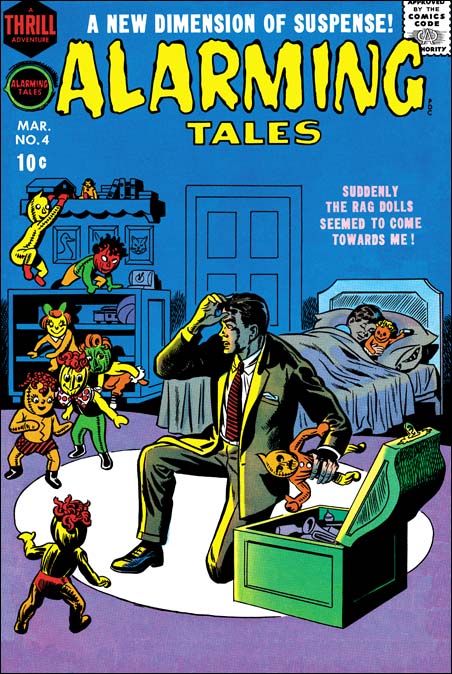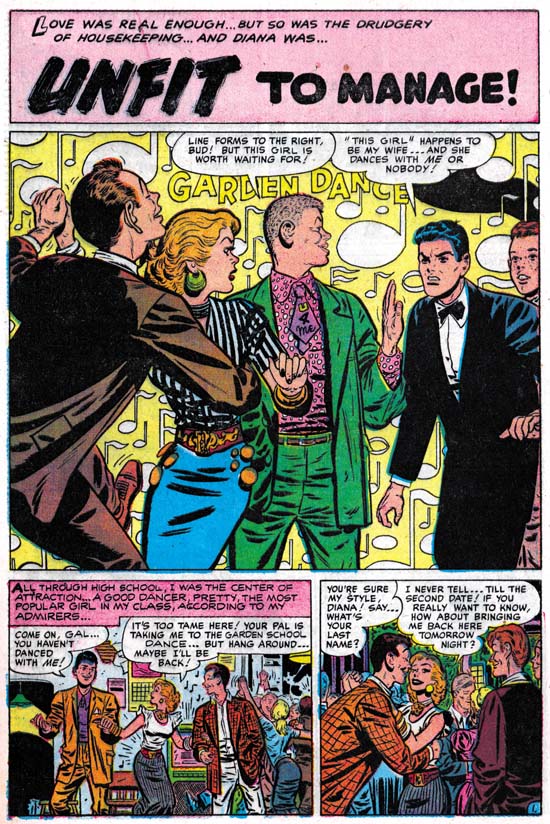
True Bride-To-Be Romances #18 (June 1956)
“Unfit to Manage” by Bill Draut
In 1956 Jack Kirby was doing pretty much all the artwork for the Prize romance comics. This was after the failure of the Simon and Kirby publishing company called Mainline. It seems that Joe Simon was doing some editorial work for Harvey Comics. Jack provided some covers but does not appear to have done much else for Harvey. Although I believe Joe was the editor, I think it would be a mistake to consider these Harvey romances as Simon and Kirby productions. Some of the artists had been doing work for these comics before Joe was editor. Also the format of the stories did not change with Joe’s arrival. But two regulars for Simon and Kirby productions, Bill Draut and John Prentice, started to provide material for the Harvey romances. I presume this helped these artists to makeup for the loss of work from the Prize romances since Kirby was now doing all of that. For reasons that can only be guessed at Mort Meskin, another S&K regular, never made the transition to Harvey.
I must admit I generally prefer the S&K produced romances over the Harvey comics. The Harveys tend to be done to a formula while the S&K productions are more variable. But there are some real gems in the Harvey romances and it probably is not a coincidence that these tend to occur with Simon as editor and Draut or Prentice as artist. “Unfit to Manage” is one of those small masterpieces.
Bill Draut is one of those artists that nowadays tends to be overlooked. Part of the problem was that much of Bill’s work was for the romance comics, a now pretty much extinct genre. Further most of Bill’s work was for Simon and Kirby productions. This meant that he was overshadowed by Jack Kirby (weren’t most artists?). Some of Bill’s work has even been attributed to Jack (here, and here). Finally after S&K, Draut went to DC where his art seemed to suffer. I suspect he was trying to adapt his drawing to be more like the DC house style. Although I am not very familiar with this period it seems to me that Bill lost some of his best features without gaining enough in his newer manner.
The panel layout for the first page of “Unfit to Manage” is one very typical of Harvey romances. But the splash panel itself is a real gem. The background is a field of floating musical notes and the words “Garden Dance”. The “Garden Dance” might suggest a banner but otherwise the background is abstract. This sort of suggestive rather then depicted background was a device rarely used in S&K productions and probably never by Kirby. Here it is very effective for Draut and there is little doubt that we are in some dance. An especially good touch are the characters that Bill presents almost like they are some sort of frieze. Starting from the left we find a young man so engrossed in his dance that he is oblivious to the unfolding drama. What a dancer he is with his left leg brought up high and his head thrust back. Next is is partner who has already stopped dancing and looks surprised to our right. The next character is what I am sure was meant to be a hipster. Was the somewhat comical figure he presents due to our modern eyes or was it apparent when the comic was published? Look at that wild shirt and the incredibly short but wide tie that reads “U 4 Me”. Our hipster asserts his right to be the woman’s next dance partner. Our eyes are continued to be directed to our right by his turn of the head. Our direction to the right is finally halted by an angry man looking in the opposite direction. He declares himself the woman’s husband and denies others any dancing privileges. Although limited to half a page, this splash panel does everything you could expect of it. It is visually interesting, the composition controls what we see and when we see it, and that with a few short sentences provides a summary for the story to entice the potential purchaser.
In the story we find a popular and fun loving young woman. Surprising she falls in love with a young man who acts older then his years. The woman does try to be a dutiful wife and then mother, but still enjoys going out. The husband reluctantly indulges her until he looses his job. Unable to support their nice house and the life style his wife enjoys, the man wants to move. The wife refuses to go along and the man leaves with the child and divorce court follows. The lady finally recognizes what she is about to loose and convinces the man to try again before the divorce becomes final. It is a well written story. The overall story of couple meet, couple have problems and couple reunite at end is a standard for romance comics. Keep in mind other that genre at that time such as superhero comics followed their own predictable overall formulas. But “Unfit to Manage” has enough variations within that story outline to make it rather different from most romance comic book stories.
I am unable to read these older romance stories without reflecting how much different the world that they project is from our present one. Actually that is one of the things I enjoy about these romance comics. In “Unfit to Manage” the woman is presented in a bad light while the man comes off rather lightly. This despite the fact that in one scene the woman reaches for her child who the man grabs and raises out of her reach. I am sure that such a use of a baby as pawn in the battle between a couple continues today, but most of the public would consider it unacceptable behavior. The divorce court is interesting because the judge clearly is taking the man’s side and is about to award him custody. But it is not at all clear that the woman’s action were truly so negligent as to justify such an action. Of course a comparison between now and then was not original a goal for such a story. But that does not mean it cannot or should not be one for us today.


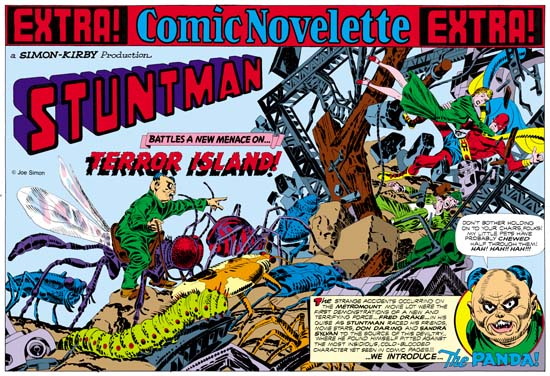
 “Terror Island” introduces a new antagonist, the Panda. Of course Stuntman had faced various opponents in his previous stories but they all were rather generic. None of the earlier villains really stood out and it is clear that none were ever meant to reappear in future Stuntman stories. The Panda seems special and I believe was Simon and Kirby’s first attempt to create Stuntman’s nemesis, the equivalent of the Red Skull for Captain America. Basing a villain on a panda may seem an odd choice, after all what could be more cute and cuddly then a panda, at least in the mind of the public. Sure Jack draws the Panda to look as vicious as possible without loosing his panda look. But the real source for this character is not the bear, but China’s leader Mao Tse-tung (nowadays his name is normally transcribed as Zedong). Today with all the world companies scrambling to get a share of the Chinese market it is easy to forget at that time communist China was a very closed society. As China’s leader and his with description of the U.S. as a “paper tiger” Mao was considered a special menace. Still it is not at all clear whether the Panda really could fulfill the role Joe and Jack were casting him for.
“Terror Island” introduces a new antagonist, the Panda. Of course Stuntman had faced various opponents in his previous stories but they all were rather generic. None of the earlier villains really stood out and it is clear that none were ever meant to reappear in future Stuntman stories. The Panda seems special and I believe was Simon and Kirby’s first attempt to create Stuntman’s nemesis, the equivalent of the Red Skull for Captain America. Basing a villain on a panda may seem an odd choice, after all what could be more cute and cuddly then a panda, at least in the mind of the public. Sure Jack draws the Panda to look as vicious as possible without loosing his panda look. But the real source for this character is not the bear, but China’s leader Mao Tse-tung (nowadays his name is normally transcribed as Zedong). Today with all the world companies scrambling to get a share of the Chinese market it is easy to forget at that time communist China was a very closed society. As China’s leader and his with description of the U.S. as a “paper tiger” Mao was considered a special menace. Still it is not at all clear whether the Panda really could fulfill the role Joe and Jack were casting him for.
